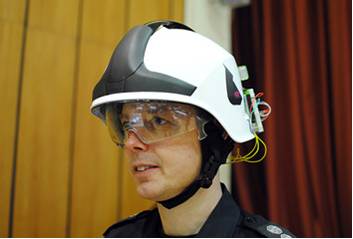
Incident Report Subject: The $7 Helmet Hack That Could Save Fire-fighters’ Lives Date of Email report: Tue 23/04/2013 Report Detail:
A team of six people at the recent hackathon at Imperial College, London created their winning solution in a weekend. It had to warn fire-fighters when external temperatures reached 350° Celsius, had to be affordable, and had to fit within the fire-fighter’s existing kit. “Given that fire-fighters already had audio alarms and that you don’t want to be confusing them visually, we needed a signal that would get through even if they were really stressed,” said Ross Atkin, one of the winning team. Their answer: a cell phone vibrator, a heat sensor and an Arduino — a cheap computer often used in toys — built into a helmet that alerts the fire-fighter through vibrating the back of the neck. “The positioning of it [the alarm] on the back of the neck was because we needed somewhere where the device could be exposed to ambient temperatures, but we had a reasonable route to a relatively sensitive part of the body.” This solution could come in at as little as £5 ($7) if manufactured at scale, the team calculated. The project will get funding of approximately £6,000 ($9,153) from the Urban Prototyping conference to make a fully-tested prototype. Key challenges involve sourcing parts that can work reliably at temperatures of 350° Celsius (662° Fahrenheit) and above. The hackathon was part of the Urban Prototyping movement founded by Peter Hirshberg in San Francisco two years ago Additional Documentation:
|

